 It’s estimated that around one-in-seven will have some kind of hearing loss during their lifetime. So what is hearing loss and how can it be corrected? The sensitivity of our hearing is indicated by the quietest sound that we can detect, called the hearing threshold.
It’s estimated that around one-in-seven will have some kind of hearing loss during their lifetime. So what is hearing loss and how can it be corrected? The sensitivity of our hearing is indicated by the quietest sound that we can detect, called the hearing threshold.
Your threshold can be accurately measured by a hearing aid audiologist, who will note on a graph the quietest sounds, at different frequencies, that you can hear.
Normal hearing thresholds are not the same for all frequencies. If different frequencies of sound are played at the same volume (amplitude), some will be perceived as loud, and others quiet or even completely inaudible.
Generally, if the volume or amplitude is increased, a sound is more likely to be heard.
Causes of hearing loss
Although accident, disease or exposure to toxic substances or excessive noise can all cause hearing loss, by far the most common factor is the passage of time. As with our eyesight, our hearing becomes less effective as we grow older and the older we are the greater the likelihood of us not being able to hear properly. This so called “age induced” hearing loss cannot be reversed and untreated can lead to other problems including ill health.
Research has shown that people with untreated hearing loss begin to opt out of conversations because they cannot hear what is being said. Relationships and work can become difficult and eventually the person with hearing loss can become socially isolated and depressed. Fortunately, whilst the lost hearing can never be restored, modern hearing instruments can dramatically improve quality of life, not just for the wearer but for their families too. The only sure way to find out if your hearing is not up to scratch is to have a hearing test and if there is any doubt at all, see a hearing aid audiologist who is a BSHAA member.
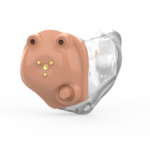 Hearing Aids
Hearing Aids
Today’s hearing aids are amazing. To think that you can fit multiple microphones, a loudspeaker and the most sophisticated digital signal processors in such a tiny, discreet device is beyond the wildest dreams of the early pioneers in this science.
Early versions of hearing aids were large because the components were borrowed from other devices like analogue radios. The first revolution came when these could be packaged into an ear level device.
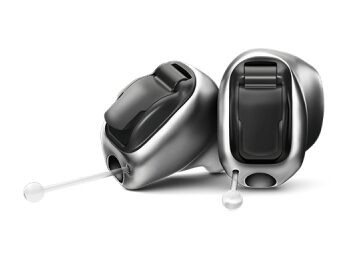 The next significant step was the use of digital amplifiers as this lent itself beautifully to the miniaturization of key components.
The next significant step was the use of digital amplifiers as this lent itself beautifully to the miniaturization of key components.
Today, even severe hearing losses can be helped by tiny hearing aids made to fit the specific contours of the inside of someone’s ear canal.
Hearing aids come in so many different shapes and sizes. Importantly we are often asked ‘which is the right hearing aid for me?’ and the answer to this question is simple – the right hearing aid for you is the one that is appropriate for your hearing loss and that you are happy to use.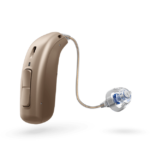
Your hearing aid audiologist is the person to ask which is hearing aids are appropriate for your hearing loss and your needs.
Thereafter, you can decide whether you want a hearing system that it is easy to handle use and maintain or something that is invisible, but may require a bit more investment in time to use effectively.
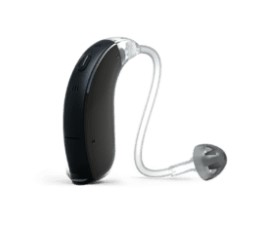 The most commonly recognised types of hearing aid available in the UK today are – receiver in the canal (‘RIC’, a very small behind the ear device with a wire feeding sound into the ear canal).
The most commonly recognised types of hearing aid available in the UK today are – receiver in the canal (‘RIC’, a very small behind the ear device with a wire feeding sound into the ear canal).
More often used in NHS settings (depending on area) – a thin tube and dome.
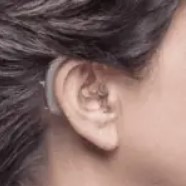
This is the less-common behind the ear (with a thick tube and custom-built mould).